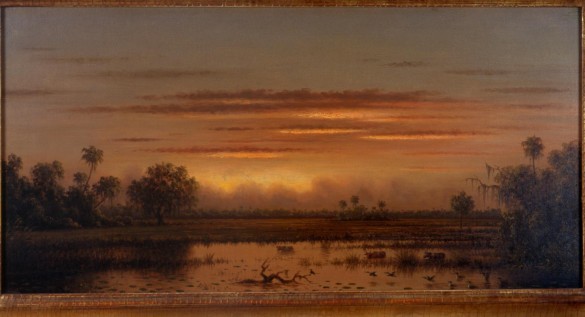Written by Jocelyn Boigenzahn, Curatorial Intern

Martin Johnson Heade (American, 1819 – 1904), The St. Johns River, c.1890s, oil on canvas, 13 x 26 in., Purchased with funds from Membership Contributions, AP.1966.29.1.
Martin Johnson Heade lived in Florida from 1883 until his death. At first an avid hunter, he soon changed his views and began writing articles protesting the use of bird feathers for ladies’ hats, and even called for the protection of wetlands at a time when marshes were more likely filled in for development than preserved.
Heade began as a portrait painter, working in a primly self-conscious and labored limner tradition. Only in the early 1860s did Heade turn to a subject well suited to his artistic personality landscapes. He worked with a limited range of pictorial elements—haystacks, clouds, sky, water and a flatly receding earth—to create a precise spatial structure within which to explore the fleeting light effects of a coastal environment. The eerie ‘luminist’ precision of his landscapes and his independence from conventional composition contribute to the unsettling impression his work makes, as well as to its appeal to modern sensibilities.
This work depicting the St. Johns River at dusk, demonstrates his use of light effects and space to capture the simplistic beauty of the wetlands and waterways that now define Jacksonville. This work is on display as a part of the La Florida exhibition on view through October 6th.


